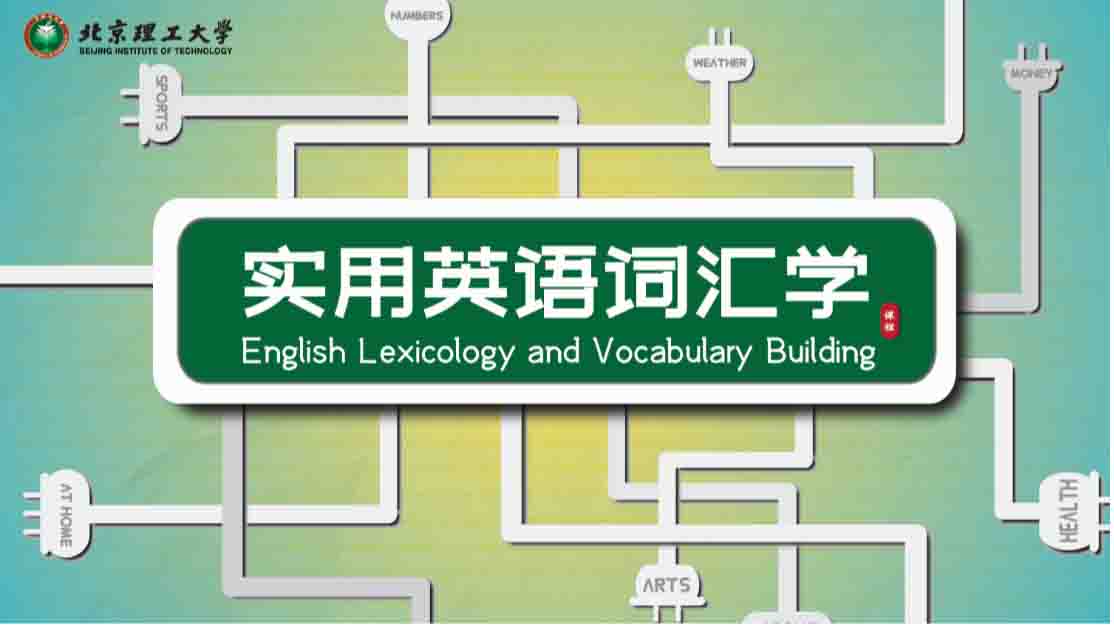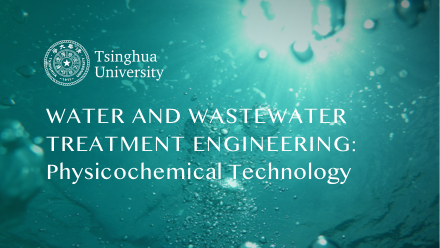
当前课程知识点:Water and Wastewater Treatment Engineering: Physicochemical Technology > Chapter 4 Filtration > 4-3 Water head loss of filter > 4-3 Water head loss of filter
返回《Water and Wastewater Treatment Engineering: Physicochemical Technology》慕课在线视频课程列表
返回《Water and Wastewater Treatment Engineering: Physicochemical Technology》慕课在线视频列表
在上一节我们学习了快滤池的基本工作过程
而要深入了解过滤过程,就需要了解其中水头损失的变化
首先给大家介绍清洁滤料层水头损失的计算
在过滤开始时,滤层是干净的
水流通过干净滤层的水头损失称为清洁滤层的水头损失
或者称为"初始水头损失"
我们可以用这个公式进行计算
其中v是滤速,l_0是滤层厚度,m_0是滤料孔隙率
如果是非均匀滤层,则可按筛分曲线分成若干层
取相邻两筛子的筛孔孔径的平均值作为各层的计算粒径
计算各层水头损失,然后求和得到整个滤层的总水头损失
计算公式如这个式子所示
其中公式中的p_i为粒径为d_i的滤料质量占全部滤料质量的比例
过滤一旦开始,滤料层就会截留杂质,导致在过滤过程中水头损失发生变化
这个变化过程难以用理论公式进行描述
但可以通过设置测压管,来测定过滤过程中滤池各个部分的水头损失变化
这里,为了便于理解,假设在过滤周期内,滤池的水位和滤速都不变
滤池的总水头H可以由以下几部分组成
其中Ht代表滤料层的水头损失,由这两测压管的液位差进行计算
h_1是承托层和配水系统水头损失,由这两个测压管的液位差进行计算
第3项h_t代表出水滤速控制阀的水头损失
第4项是流速水头,第5项h_2为剩余水头
滤层的水头损失H_t可以进一步用清洁滤层水头损失H_0
加上t时刻的滤层水头损失增值△Ht来进行计算
下面,我们来看看在一个过滤周期中各项水头损失是如何变化的?
在某个时刻t,随过滤的进行,滤层中截留的杂质逐渐增加
导致滤层水头损失从清洁滤层的初始水头损失H_0增加到了H_t
但由于承托层和配水系统在整个过滤过程中基本上是干净的
只要滤速不变,h_1就不会发生变化
同时流速水头也不变
因此为了保持滤速不变
滤层水头损失从H_0到H_t的这部分增值只能通过调节出水滤速控制阀门来弥补
即控制阀门的阻力必须从原来的h_0减少到h_t,此时剩余水头h_2仍可保持不变
H_t随时间的变化曲线反映了滤层截留的杂质量与过滤时间的关系
这里我们假设H_t随时间呈线性增加
当运行到e点,出水滤池控制阀门阻力h_t变为最小值h_T
即控制阀全开时,滤层水头损失增加到了H_T
此时过滤时间为T,这就是过滤周期
如果此时继续过滤,则剩余水头h_2就要被开始动用
运行到m点,过滤时间达T'时
剩余水头h_2被全部消耗完,此时滤池达到最大允许水头损失
如果再继续过滤,过滤出水量就会减少
因此T'是滤池的最大可能过滤周期
但在实际运行中,过滤周期到T时滤池也就停止运行了
这节介绍了滤池过滤周期中水头损失的变化
下一节将介绍滤池的过滤操作方式
-0-2 Water treatment process
-0-3 Wastewater treatment process
--0-3 Wastewater treatment process
-Chap 0 Homeworks
-1-1 Introduction
-1-2 Properties of colloids
-1-3 Mechanisms and process of coagulation and flocculation
--1-3 Mechanisms of coagulation and flocculation
-1-4 Coagulant and coagulant aids
-- 1-4 Coagulant and coagulant aids
-1-5 Kinetics of coagulation and flocculation
--1-5 Kinetics of coagulation and flocculation
-1-6 Factors affecting the coagulation performance
--1-6 Factors affecting the coagulation performance
-1-7 Facilities for coagulation and flocculation
--1-7 Facilities for coagulation and flocculation
-Chapter 1 Homeworks
-2-1 Introduction
-2-2 Discrete particle settling
--2-2 Discrete particle settling
-2-3 Flocculent settling
-2-4 Zone settling
-2-5 Rectangular settling tank
--2-5 Rectangular settling tanks
-2-6 Process calculation of rectangular settling tanks
--2-6 Process calculation of rectangular settling tanks
-2-7 Vertical Flow (up-flow ) and radial flow settling tank
--2-7 Vertical Flow (up-flow ) and radial flow settling tank
-2-8 Plated sedimentation tank
--2-8 Plated sedimentation tank
-2-9 Clarification pool
-3D interactive demonstration for settling tanks
-Chapter 2 Homework (part 1)
-Chapter 2 Homework (part 2)
-3-1 Introduction
-3-2 Theoretical foundation of air floatation
--3-2 Theoretical foundation of air floatation
-3-3 Pressurized dissolved air flotation
--3-3 Pressurized dissolved air flotation
-Chapter 3 Homework
-4-1 Introduction
-4-2 Structure and process of conventional rapid filter
--4-2 Structure and process of conventional rapid filter
-4-3 Water head loss of filter
--4-3 Water head loss of filter
-4-4 Filtration method of filter
--4-4 Filtration method of filter
-4-5 Filter media
-4-6 Water distribution system
--4-6 Water distribution system
-4-7 Filter backwashing
-4-8 Siphon filter
-4-9 Gravity valveless filter
--4-9 Gravity valveless filter
-4-10 Movable hood filter
-3D interactive demonstration for filtration tanks
--Usage and description for 3-D demonstration
-Chapter 4 Homework
-5-1 Introduction
-5-2 Influence factors of disinfection
--5-2 Influence factors of disinfection
-5-3 Chlorine disinfection
-5-4 Chlorine dioxide disinfection
--5-4 Chlorine dioxide disinfection
-5-5 Ultraviolet disinfection
--5-5 Ultraviolet disinfection
-Chapter 5 Homework
-6-1 Ion-exchange resin
-6-2 Properties of ion-exchange reactions
--6-2 Properties of ion-exchange reactions
-6-3 Properties of cation exchange resin
--6-3 Properties of cation exchange resin
-6-4 Properties of anion exchange resin
--6-4 Properties of anion exchange resin
-6-5 Softening system using ion exchange
--6-5 Softening system using ion exchange
-6-6 Desalination system using ion exchange
--6-6 Desalination system using ion exchange
-6-7 Ion-exchange equipment
-6-8 Treatment of industrial wastewater by ion-exchange method
--6-8 Treatment of industrial wastewater by ion-exchange method
-Chapter 6 Homework
-7-1 Introduction
-7-2 Principle and characteristics of electrodialysis
--7-2 Principle and characteristics of electrodialysis
-7-3 Configuration of electrodialysis unit
--7-3 Configuration of electrodialysis unit
-7-4 Operating parameters for electrodialysis unit
--7-4 Operating parameters for electrodialysis unit
-7-5 Principle and process of reverse osmosis
--7-5 Principle and process of reverse osmosis
-7-6 Operating parameters for reverse osmosis
--7-6 Operating parameters for reverse osmosis
-7-7 Principles and characteristics of UF and MF
--7-7 Principles and characteristics of UF and MF
-7-8 Design of ultrafiltration and microfiltration process
--7-8 Design of ultrafiltration and microfiltration process
-Chapter 7 Homework
-8-1 Fundamental knowledge and classification
--8-1 Fundamental knowledge and classification
-8-2 Ozonation
-8-3 Photo-catalytic oxidation
--8-3 Photo-catalytic oxidation
-8-4 Supercritical water oxidation
--8-4 Supercritical water oxidation
-8-5 Electrolysis
-Chapter 8 Homework
-9-1 Introduction
-9-2 Adsorption equilibrium and adsorption isotherm
--9-2 Adsorption equilibrium and adsorption isotherm
-9-3 Adsorption breakthrough curve
--9-3 Adsorption breakthrough curve
-Chapter 9 Homework



